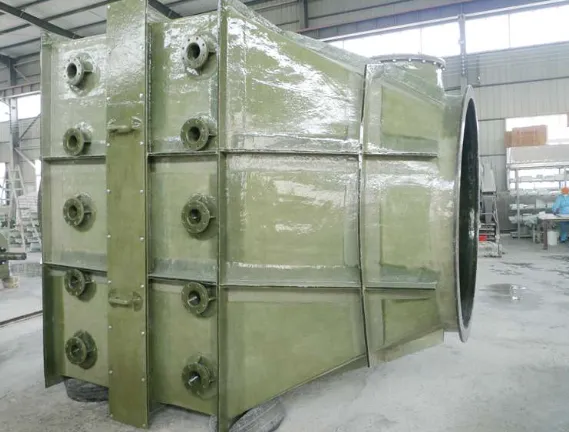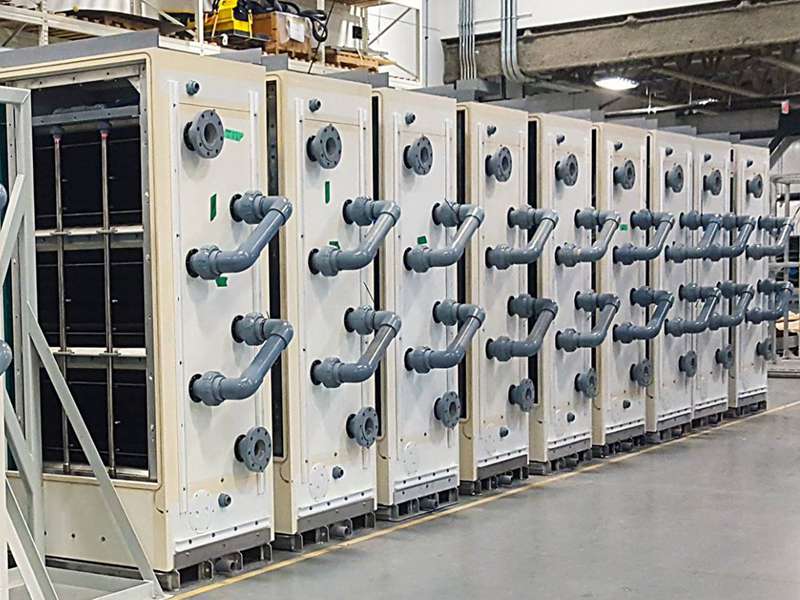
-
 अफ्रिकी
अफ्रिकी -
 अल्बेनियन्
अल्बेनियन् -
 अम्हारिक
अम्हारिक -
 अरबी
अरबी -
 आर्मेनियाली
आर्मेनियाली -
 अजरबैजानी
अजरबैजानी -
 बास्क
बास्क -
 बेलारूसी
बेलारूसी -
 बंगाली
बंगाली -
 बोस्नियाली
बोस्नियाली -
 बुल्गेरियन
बुल्गेरियन -
 क्याटालान
क्याटालान -
 सेबुआनो
सेबुआनो -
 चीन
चीन -
 चीन (ताइवान)
चीन (ताइवान) -
 कोर्सिकन
कोर्सिकन -
 क्रोएसियाली
क्रोएसियाली -
 चेक
चेक -
 डेनिस
डेनिस -
 डच
डच -
 अंग्रेजी
अंग्रेजी -
 एस्पेरान्तो
एस्पेरान्तो -
 एस्टोनियाली
एस्टोनियाली -
 फिनिस
फिनिस -
 फ्रान्सेली
फ्रान्सेली -
 फ्रिसियन
फ्रिसियन -
 ग्यालिसियन
ग्यालिसियन -
 जर्जियाली
जर्जियाली -
 जर्मन
जर्मन -
 ग्रीक
ग्रीक -
 गुजराती
गुजराती -
 हाइटियन क्रियोल
हाइटियन क्रियोल -
 हौसा
हौसा -
 हवाईयन
हवाईयन -
 हिब्रू
हिब्रू -
 होइन
होइन -
 मियाओ
मियाओ -
 हंगेरी
हंगेरी -
 आइसल्याण्डिक
आइसल्याण्डिक -
 igbo
igbo -
 इन्डोनेसियाली
इन्डोनेसियाली -
 आइरिस
आइरिस -
 इटालियन
इटालियन -
 जापानी
जापानी -
 जाभानीज
जाभानीज -
 कन्नड
कन्नड -
 कजाख
कजाख -
 खमेर
खमेर -
 रुवाण्डन
रुवाण्डन -
 कोरियाली
कोरियाली -
 कुर्दिश
कुर्दिश -
 किर्गिज
किर्गिज -
 TB
TB -
 ल्याटिन
ल्याटिन -
 लाटभियन
लाटभियन -
 लिथुआनियाली
लिथुआनियाली -
 लक्जमबर्गिश
लक्जमबर्गिश -
 म्यासेडोनियन
म्यासेडोनियन -
 मालगाशी
मालगाशी -
 मलय
मलय -
 मलयालम
मलयालम -
 माल्टीज
माल्टीज -
 माओरी
माओरी -
 मराठी
मराठी -
 मङ्गोलियन
मङ्गोलियन -
 म्यानमार
म्यानमार -
 नेपाली
नेपाली -
 नर्वेजियन
नर्वेजियन -
 नर्वेजियन
नर्वेजियन -
 अक्सिटन
अक्सिटन -
 पश्तो
पश्तो -
 फारसी
फारसी -
 पोलिश
पोलिश -
 पोर्चुगिज
पोर्चुगिज -
 पञ्जाबी
पञ्जाबी -
 रोमानियाली
रोमानियाली -
 रुसी
रुसी -
 सामोन
सामोन -
 स्कटिश गेलिक
स्कटिश गेलिक -
 सर्बियाई
सर्बियाई -
 अंग्रेजी
अंग्रेजी -
 शोना
शोना -
 सिन्धी
सिन्धी -
 सिंहला
सिंहला -
 स्लोभाक
स्लोभाक -
 स्लोभेनियाली
स्लोभेनियाली -
 सोमाली
सोमाली -
 स्पेनिस
स्पेनिस -
 सुन्दानीज
सुन्दानीज -
 स्वाहिली
स्वाहिली -
 स्विडेनी
स्विडेनी -
 तागालोग
तागालोग -
 ताजिक
ताजिक -
 तमिल
तमिल -
 टाटर
टाटर -
 तेलुगु
तेलुगु -
 थाई
थाई -
 टर्की
टर्की -
 तुर्कमेन
तुर्कमेन -
 युक्रेनी
युक्रेनी -
 उर्दू
उर्दू -
 उइघुर
उइघुर -
 उज्बेक
उज्बेक -
 भियतनामी
भियतनामी -
 वेल्श
वेल्श -
 मद्दत गर्नुहोस्
मद्दत गर्नुहोस् -
 येडिस
येडिस -
 योरुबा
योरुबा -
 जुलु
जुलु
Weather Resistance of Outdoor FRP Fans
In demanding industrial and commercial environments, ensuring the longevity and reliable performance of ventilation systems exposed to the elements is paramount. Outdoor fans face relentless assault from ultraviolet (UV) radiation, temperature extremes, moisture, corrosive chemicals, and physical wear. Selecting the right material is not just an operational consideration; it's a strategic investment in durability and cost-effectiveness. This is where Fiberglass Reinforced Plastic (FRP), also known as Glass Reinforced Plastic (GRP), emerges as the superior solution, particularly for large-scale installations. Companies specializing in advanced composite manufacturing, like Hengshui Jrain Frp Co., Ltd., bring essential expertise to this field. Located in Hengshui City, China, Jrain FRP has been a dedicated professional manufacturer of composite products since 2008. Their continuous activity in improving products, refining manufacturing processes, and developing markets ensures they remain at the forefront of delivering high-performance, weather-resistant solutions like FRP fans for global applications.
FRP's inherent properties make it exceptionally well-suited for outdoor fan construction. Unlike traditional metals, FRP is a composite material formed by embedding glass fibers within a polymer resin matrix. This synergy creates a material that is inherently non-corrosive, lightweight yet incredibly strong, and highly resistant to environmental degradation. The resin acts as a protective barrier, shielding the reinforcing fibers from moisture, chemicals, and UV light, while the fibers provide the structural integrity necessary for demanding fan applications. This combination is fundamental to achieving the outstanding weather resistance that defines quality fiberglass fans.

The Core Advantages of FRP Fans in Outdoor Environments
The primary challenge for any outdoor equipment is combating corrosion. Steel fans, even when galvanized or painted, are vulnerable to rust, especially in humid, coastal, or chemically aggressive atmospheres. FRP fans eliminate this concern entirely. The material is completely inert to a vast range of chemicals, including salt spray, acidic fumes, alkaline environments, and industrial pollutants. This intrinsic corrosion resistance translates directly into a dramatically extended service life and significantly reduced maintenance burdens compared to metallic alternatives. Furthermore, FRP's exceptional weatherability ensures that prolonged exposure to intense sunlight (UV radiation) does not cause significant degradation, embrittlement, or loss of structural integrity. Fiberglass fans maintain their strength and appearance over decades, even in harsh, sun-drenched locations. This inherent durability is a cornerstone of Jrain FRP's manufacturing philosophy, ensuring their products deliver reliable performance year after year.
Beyond corrosion resistance, GRP fans offer substantial operational benefits. Their lightweight nature – typically around 50% lighter than equivalent steel fans – simplifies handling, transportation, and installation, particularly crucial for large units often deployed in bulk quantities for industrial projects. This weight reduction also places less stress on supporting structures. The material's smooth, non-porous surface minimizes air friction (improving efficiency) and resists the buildup of dirt, dust, and corrosive deposits, further enhancing longevity and reducing cleaning requirements. The table below summarizes the key advantages of FRP over steel for outdoor fan applications:
|
Advantage |
विवरण |
|
जंग प्रतिरोध |
Excellent resistance to salt spray, chemicals, moisture, and industrial fumes. |
|
Weatherability & UV Resistance |
Maintains structural integrity and appearance under prolonged sun exposure. |
|
Lightweight |
Approximately 50% lighter than steel, easing handling and installation. |
|
Low Maintenance |
Little to no maintenance required due to non-corrosion and dirt resistance. |
|
Long Service Life |
Potential lifespan of up to 50 years in demanding environments. |
|
High Cost Effectiveness |
Lower lifecycle costs due to minimal maintenance and long service life. |
Optimizing Performance with Fiberglass Fan Material Science
The exceptional weather resistance of FRP fans is not accidental; it's engineered through precise material selection and processing. Jrain FRP leverages its expertise in composites to tailor the resin matrix to the specific environmental demands of the application. Standard isophthalic polyester resins offer robust general-purpose weather resistance. For more severe chemical exposures, such as those found in wastewater treatment plants or chemical processing facilities, premium vinyl ester resins are employed, providing superior resistance to a broader spectrum of corrosive agents. Crucially, UV inhibitors are integrally formulated into the gel coat (the outer protective layer) and often the resin itself during manufacturing. This gel coat is the first line of defense, providing a high-gloss, impervious barrier that shields the underlying laminate from UV degradation, moisture ingress, and minor abrasion. The result is a fiberglass fan housing and blades engineered to withstand decades of exposure without significant loss of performance or aesthetics.
Complementary components, like fiberglass dampers, are often integrated into ventilation systems featuring GRP fans. These dampers, used to regulate airflow or isolate sections, benefit from the same material science principles. Typically manufactured using vinyl ester resins for enhanced chemical resistance, and available with fire-retardant resins when required (e.g., for Class 1 flame spread ratings), these dampers are also highly weather-resistant. As customized products frequently made via hand lay-up on molds, Jrain FRP ensures their dampers match the durability and environmental performance of their fans, creating cohesive, long-lasting system solutions.
GRP Fan Applications and Complementary Systems
The robust weather resistance of GRP fans makes them the preferred choice across numerous demanding outdoor and semi-outdoor applications where bulk deployment is common. Key sectors include:
- HVAC for Large Facilities:Rooftop installations for factories, warehouses, shopping malls, and institutions benefit from corrosion resistance and UV stability.
- Power Generation:Cooling towers and auxiliary building ventilation in power plants, exposed to heat, moisture, and potential chemical fumes.
- Water & Wastewater Treatment:Handling highly corrosive atmospheres laden with moisture, hydrogen sulfide, chlorine, and other chemicals in pump stations, aeration tanks, and sludge handling buildings.
- Chemical & Petrochemical Plants:Ventilating areas with aggressive chemical vapors and fumes.
- Marine & Coastal Installations:Dockside buildings, shipyards, and offshore platforms where salt spray corrosion is a major concern.
- Mining & Mineral Processing:Ventilation in dusty, humid, and potentially corrosive environments.
In all these scenarios, the combination of the fan's material durability and the integration of complementary fiberglass dampers ensures a complete, weather-hardened ventilation solution designed for minimal downtime and maximum operational lifespan.
FAQs about Weather-Resistant FRP Fans
How does an FRP fan withstand extreme temperature fluctuations?
FRP fans exhibit excellent dimensional stability across a wide temperature range, typically from -40°C to +80°C (and higher with specific resin selections). The composite structure is less prone to thermal expansion and contraction issues compared to metals, reducing stress points. The material properties, including strength and stiffness, remain consistent within this operational envelope, ensuring reliable performance in both freezing winters and scorching summers.
What makes fiberglass fans inherently corrosion-proof?
Unlike metals that corrode electrochemically, fiberglass fans are made from a non-metallic composite. The resin matrix forms an impervious barrier that prevents moisture and chemical penetration, while the embedded glass fibers are inert. This fundamental material difference eliminates rust and galvanic corrosion, making them ideal for humid, coastal, or chemically aggressive environments where metal fans rapidly deteriorate.
Are GRP fans suitable for direct coastal/salt spray exposure?
Absolutely. Resistance to salt spray corrosion is one of the primary strengths of GRP fans. The non-metallic composition is unaffected by salt, making them exceptionally well-suited for marine environments, coastal installations, offshore platforms, and any location where salt-laden air is prevalent. This is a major reason for their widespread use in these demanding settings.
How does the weather resistance of FRP fans impact maintenance schedules?
The exceptional weather and corrosion resistance of FRP fans drastically reduces maintenance requirements. There is no need for periodic repainting to combat rust or UV damage. The smooth gel coat surface resists dirt buildup and is easy to clean if necessary. This translates into significantly lower lifecycle costs and less operational downtime compared to maintaining corrosion-prone metal fans exposed to the elements.
Can fiberglass fans be customized for specific harsh weather or chemical conditions?
Yes, a key advantage of fiberglass fans is their customizability. Manufacturers like Jrain FRP can tailor the resin system (e.g., upgrading to high-performance vinyl ester for severe chemical resistance), gel coat formulation (enhanced UV inhibitors), and laminate structure to meet the precise demands of unique environmental challenges, ensuring optimal longevity and performance.
The relentless demands placed on outdoor ventilation equipment necessitate materials engineered for resilience. FRP (Fiberglass Reinforced Plastic) or GRP (Glass Reinforced Plastic) has proven itself as the superior material for outdoor fans facing harsh weather, UV exposure, and corrosive atmospheres. Its inherent non-corrosiveness, exceptional weatherability, UV resistance, and lightweight strength deliver unparalleled longevity and minimal maintenance, leading to superior lifecycle cost-effectiveness. Companies with deep expertise in composites, such as Hengshui Jrain Frp Co., Ltd., leverage their experience – honed since 2008 in product development, process refinement, and market understanding – to manufacture high-performance FRP fans and complementary systems like fiberglass dampers in large quantities. By selecting weather-resistant GRP fans, industries investing in large-scale ventilation projects secure reliable, durable performance for decades, safeguarding their operations against the elements.
ताजा खबर
-
Rectangular Tanks: Durable, Custom-Sized Storage SolutionsसमाचारAug.28,2025
-
Fiberglass Duct Our Commitment to Quality719समाचारAug.22,2025
-
Fiberglass Duct Our Commitment to QualityसमाचारAug.20,2025
-
FRP Winding Machine with Precision WindingसमाचारAug.20,2025
-
Fiberglass Walkway Grating with Easy InstallationसमाचारAug.20,2025
-
Rectangular Fiberglass Tanks for Industrial StorageसमाचारAug.20,2025









